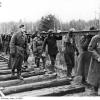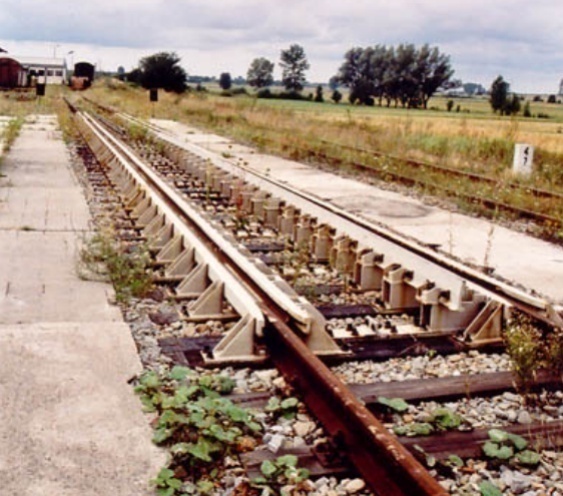Changing to Automatic Track Gauge Changeover
Different railway gauges remain as enduring obstacles.
Narrowing or widening the tracks, as happened so often during the uneasy times of war and reconstruction, is an extremely costly exercise. Transloading is an expensive and time-consuming option as well. A new and perhaps final solution to the problem has come in the form of automatic axle gauge-changing devices mounted on locomotives and wagons.
In Europe, several types of automatic track gauge changeover systems (ATGCS) have been developed, including the Spanish Talgo-RD, the Swiss CAF-BRAVA, the German DBAG-Rafil, and the Polish SUW 2000. The latter is being adopted on some lines that connect Poland with Lithuania and Ukraine, which retained the broad gauge lines from the Soviet Union.
The SUW 2000 was successfully tested on the line from Warsaw to Moscow. It requires very little addition to the existing track and the only inconvenience it causes is that the train has to slow down to around 40 km/hour during the changeover.
As with railway gauges 150 years earlier, none of the ATGC systems has been chosen as a European standard, nor is it likely to.
 Previous Story
Previous Story
How to cite this page
Slawomir Lotysz, 'Changing to Automatic Track Gauge Changeover', Inventing Europe, http://www.inventingeurope.eu/governance/changing-to-automatic-track-gauge-changeover
Sources
- Puffert, Douglas J. Tracks across Continents, Paths through History: The Economic Dynamics of Standardization in Railway Gauge. Chicago: University of Chicago Press, 2009.
- Suwalski, Ryszard. "SUW 2000 - polski zestaw kołowy o zmiennym rozstawie kół do wagonów osobowych i towarowych.” Technika Transportu Szynowego 5, no. 5 (1998): 19-24.




















